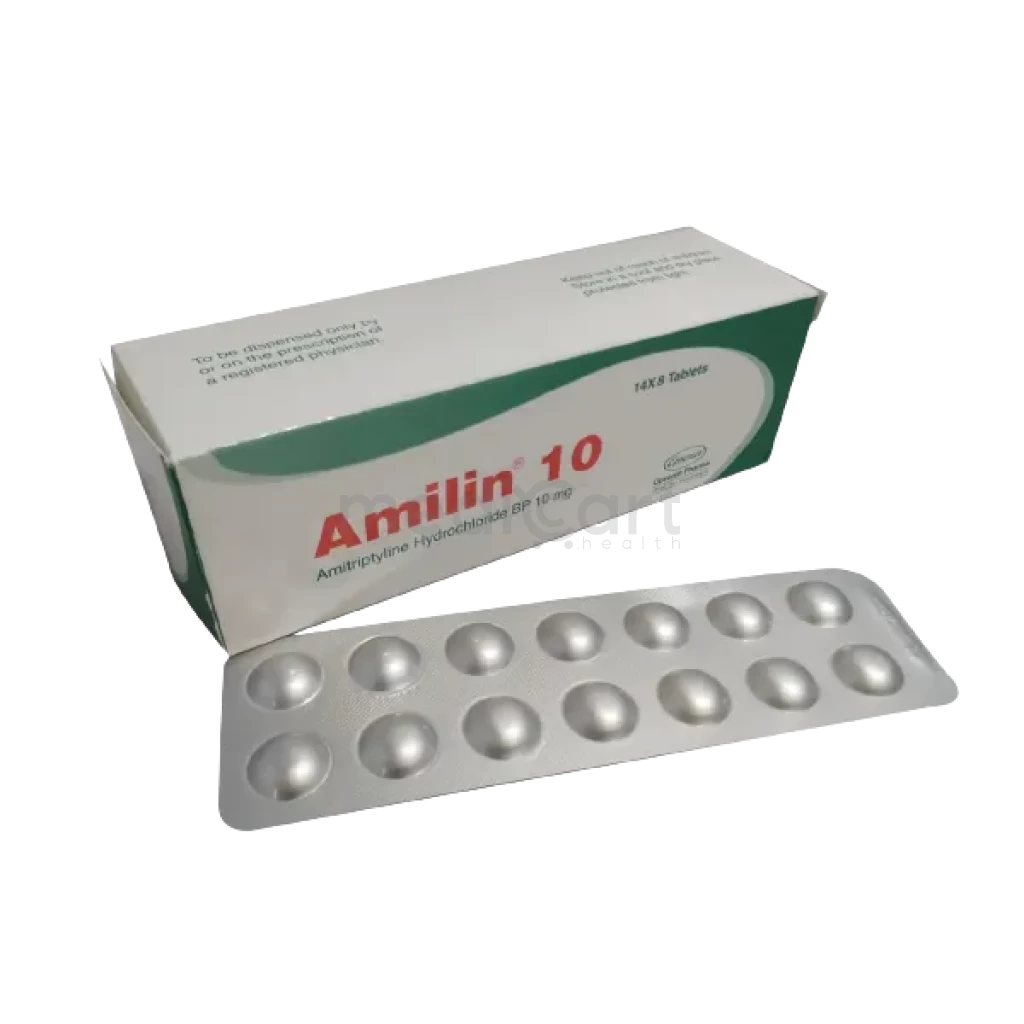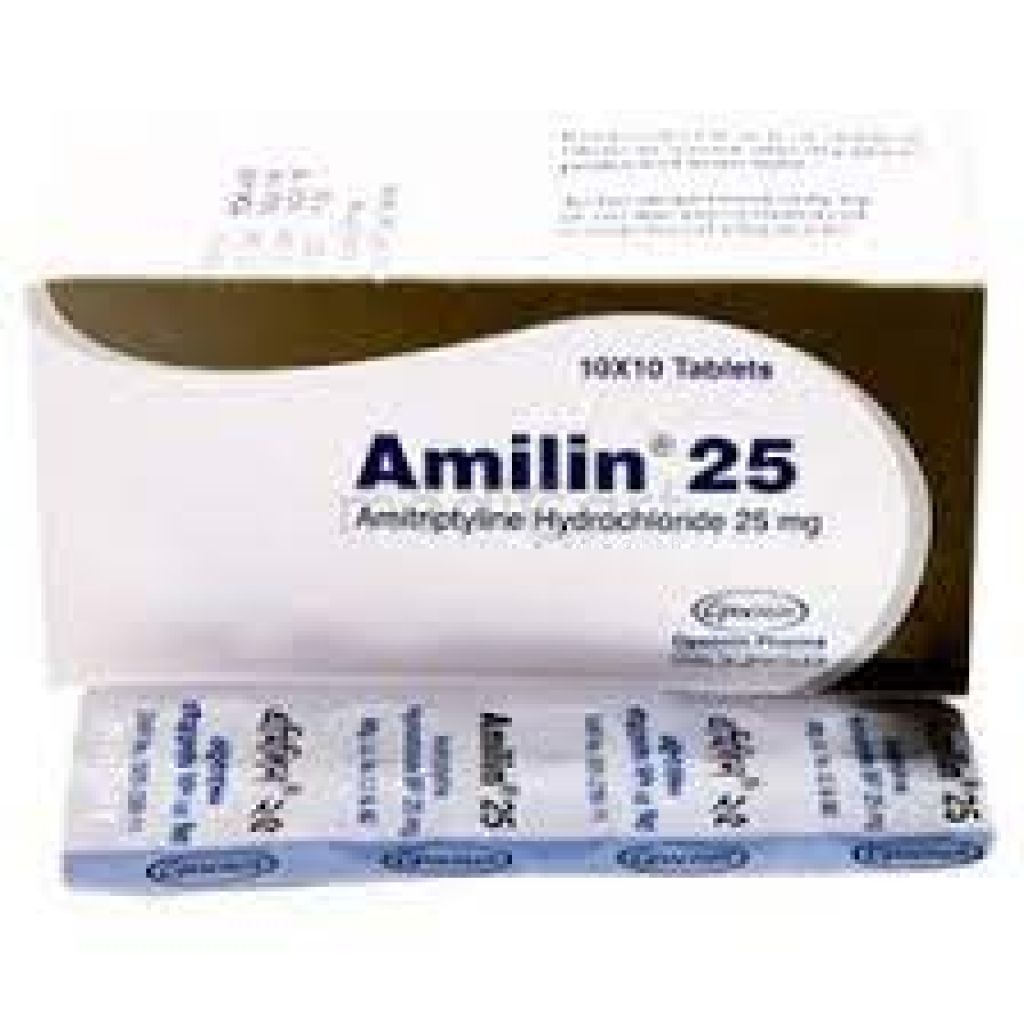

Amit - 25mg
Tablet
Pack Size :
10 Tablet x 1 Strip
Generics :
Amitriptyline hydrochloride
Manufacturer :
General Pharmaceuticals Ltd.
Best Price *
TK
17.60
* Delivery will be done in Dhaka city only.
More Information About - Amit - 25mg
Description
Generic Name
Amitriptyline HydrochloridePrecaution
Bipolar illness, pregnancy, lactation elderly, CVS disease, renal or liver impairment, epilepsy, thyroid dysfunction, DM. Avoid abrupt withdrawal; urinary retention, prostatic hyperplasia; chronic constipation; angle-closure glaucoma; phaeochromocytoma. Monitor for signs of clinical worsening, suicidality or behavioural changes. May increase risks associated with electro-convulsive therapy. May affect ability to drive or operate machinery. Lactation: Distributed in breast milk; do not nurse (AAP states effect on nursing infants is unknown but may be of concern)Indication
Migraine headache, Depression, Neuropathic pain, Post-herpetic neuralgia, Nocturnal enuresisContra Indication
Hypersensitivity, use of MAO inhibitors within the last 14 days; acute recovery phase post-MI. Concurrent usage with cisapride.Dose
N/ASide Effect
Postural hypotension, tachycardia, conduction disturbances. Dry mouth, wt gain, sour or metallic taste, stomatitis, constipation; blurring of vision, urinary retention, fatigue, dizziness, weakness, tremors, headache, confusion and delirium in elderly, sexual disturbances; peripheral neuropathy; urticaria, angioedema, sweating. Potentially Fatal: Cardiac arrhythmias.Pregnancy Category
Name : C
Description
Animal reproduction studies have shown an adverse effect on the fetus and there are no adequate and well-controlled studies in humans, but potential benefits may warrant use of the drug in pregnant women despite potential risksMode of Action
Amitriptyline is a dibenzocycloheptadiene tricyclic antidepressant. It increases synaptic concentration of serotonin and/or norepinephrine in the CNS by blocking the neuronal reuptake of norepinephrine and serotonin.Interaction
Increased risk of serotonin syndrome w/ SSRIs, TCAs, triptans, fentanyl, lithium, tramadol. May reduce plasma levels w/ barbiturates, rifampicin and other anticonvulsants. May increase plasma levels w/ methylphenidate, cimetidine, antipsychotics, Ca channel blockers. May precipitate cardiac arrhythmias w/ thyroid hormones. May reduce antihypertensive effects of debrisoquine, guanethidine and clonidine. May increase pressor effect of epinephrine and norepinephrine. May increase the risk of ventricular arrhythmias w/ antiarrhythmics (e.g. amiodarone or quinidine), antihistamines astemizole, terfenadine, some antipsychotics (pimozide, sertindole, and thioridazine), sotalol, cisapride and halofantrine. Potentially Fatal: Increased risk of serotonin syndrome w/ MAOIs, linezolid and methylene blue.Pregnancy Category Note
Pregnancy category: C Lactation: Distributed in breast milk; do not nurse (AAP states effect on nursing infants is unknown but may be of concern)Adult Dose
Adult: PO Depression Initial:50-75 mg/day; up to 150 mg/day if needed. Max: 300 mg/day in severe cases. Neuropathic pain Initial: 10-25 mg/day at night, up to 75 mg/day if needed. Migraine prophylaxis Initial: 10 mg/day at night. Maintenance: 50-75 mg/day at night. Elderly: Initially, 25-50 mg/day as a single dose (at bedtime) or in divided doses.Child Dose
PO Depression Child: Adolescent: Initially, 25-50 mg/day as a single dose (at bedtime) or in divided doses. Nocturnal enuresis Child: 6-10 yr 10-20 mg/day; 11-16 yr 25-50 mg/day. All doses to be given at bedtime. Max duration: 3 mth.Renal Dose
N/AAdministration
May be taken with or without food.Disclaimer
The information provided herein are for informational purposes only and not intended to be a substitute for professional medical advice, diagnosis, or treatment. Please note that this information should not be treated as a replacement for physical medical consultation or advice. Great effort has been placed to provide accurate and comprehensive data. However, Medicart along with its authors and editors make no representations or warranties and specifically disclaim all liability for any medical information provided on the site. The absence of any information and/or warning to any drug shall not be considered and assumed as an implied assurance of the Company.









